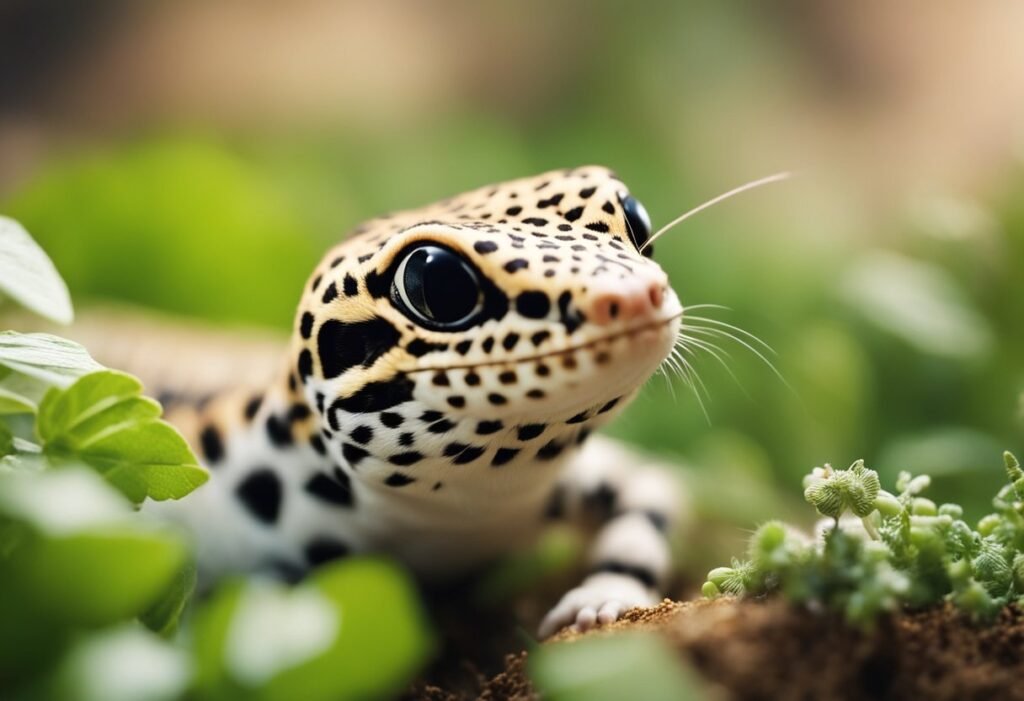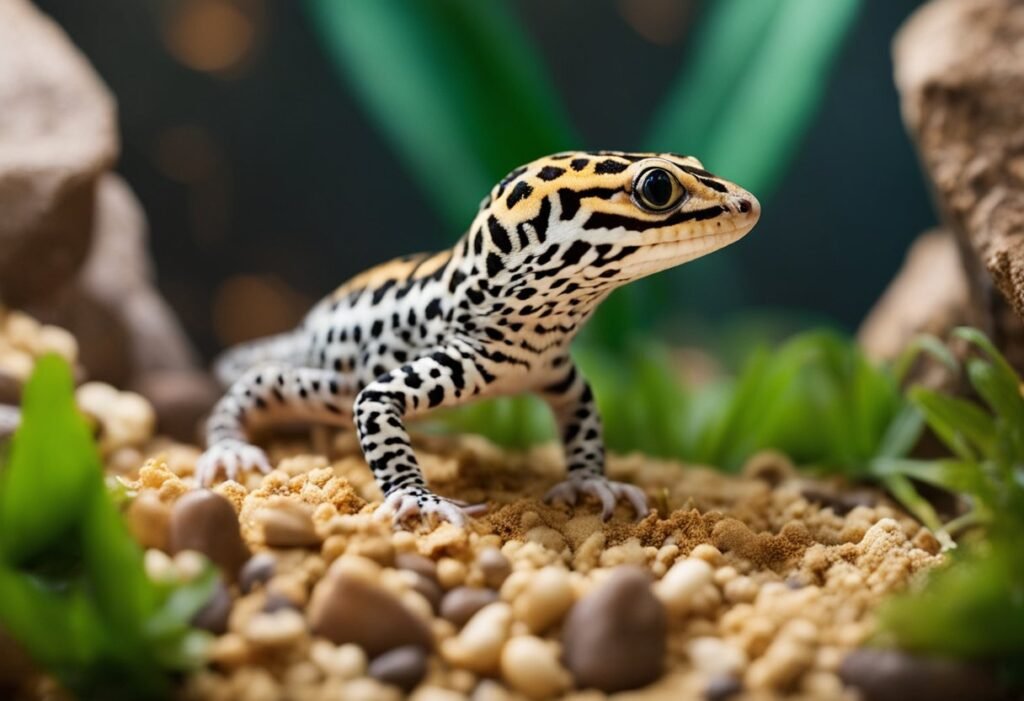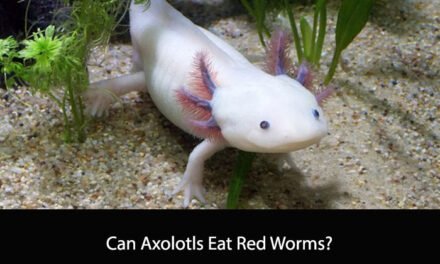Leopard geckos are one of the most popular pet reptiles due to their docile nature and low-maintenance care requirements. As a result, many new leopard gecko owners may wonder what they should feed their pets. One common question that arises is whether baby leopard geckos can eat mealworms.
In short, the answer is yes, baby leopard geckos can eat mealworms. Mealworms are a staple food for leopard geckos of all ages, and they are a good source of protein and fat. However, it is important to ensure that the mealworms are appropriately sized for the baby gecko, as they may struggle to digest larger insects. Additionally, it is important to vary the gecko’s diet to ensure they receive a balanced nutrition.
Nutritional Needs of Baby Leopard Geckos

As responsible pet owners, it is important to understand the nutritional needs of baby leopard geckos to ensure their growth and development. In this section, we will discuss the importance of a balanced diet and the protein and calcium requirements of baby leopard geckos.
Importance of a Balanced Diet
A balanced diet is crucial for the overall health and well-being of baby leopard geckos. Their diet should consist of a variety of insects, such as crickets, mealworms, and waxworms, as well as occasional vegetables and fruits. Feeding only one type of insect can lead to nutritional deficiencies and health problems.
It is important to note that baby leopard geckos have different nutritional needs than adult leopard geckos. They require a higher protein and calcium intake to support their rapid growth and development.
Protein and Calcium Requirements
Protein is essential for muscle growth and development in baby leopard geckos. They require a diet that is high in protein, with at least 20% of their diet consisting of insects such as crickets and mealworms. It is important to provide a variety of insects to ensure a balanced diet.
Calcium is crucial for the development of strong bones and teeth in baby leopard geckos. They require a calcium to phosphorus ratio of 2:1 in their diet. This can be achieved by dusting their insects with a calcium supplement before feeding.
In conclusion, a balanced diet that is high in protein and calcium is crucial for the growth and development of baby leopard geckos. Providing a variety of insects and supplementing their diet with calcium will ensure their overall health and well-being.
Suitability of Mealworms for Baby Leopard Geckos

When it comes to feeding baby leopard geckos, it is important to ensure that their diet is balanced and provides all the necessary nutrients for their growth and development. Mealworms are a popular food choice for leopard geckos, but are they suitable for baby leopard geckos?
Mealworm Nutritional Profile
Mealworms are a good source of protein, which is essential for the growth and development of baby leopard geckos. They also contain some fat, fiber, and moisture. However, mealworms are not nutritionally complete and lack some essential nutrients such as calcium and vitamin D3.
Benefits of Mealworms as a Food Source
Despite their nutritional shortcomings, mealworms can still be a part of a balanced diet for baby leopard geckos. They are easy to find and relatively inexpensive, making them a convenient food source. Additionally, mealworms are low in fat and can help prevent obesity in leopard geckos.
To ensure that baby leopard geckos receive a balanced diet, it is important to offer a variety of food sources, including mealworms, crickets, and other insects. It is also recommended to dust the food with calcium and vitamin D3 supplements to ensure that baby leopard geckos receive all the necessary nutrients for their growth and development.
In conclusion, mealworms can be a suitable food source for baby leopard geckos, but should be offered as part of a balanced diet. It is important to ensure that baby leopard geckos receive all the necessary nutrients for their growth and development.
Feeding Mealworms to Baby Leopard Geckos
When it comes to feeding baby leopard geckos, it’s important to provide them with a well-balanced diet that meets their specific nutritional needs. Mealworms are a popular choice for many gecko owners, but it’s important to understand how to properly feed them to your baby leopard gecko.
Proper Feeding Techniques
When feeding mealworms to your baby leopard gecko, it’s important to ensure that they are properly prepared. Here are a few tips to keep in mind:
- Gut-load the mealworms: Before feeding mealworms to your baby leopard gecko, it’s important to ensure that they are properly gut-loaded. This means feeding the mealworms a nutritious diet for at least 24 hours before feeding them to your gecko.
- Dust the mealworms with calcium powder: Baby leopard geckos require calcium for proper bone development, so it’s important to dust the mealworms with calcium powder before feeding them to your gecko.
- Feed appropriate-sized mealworms: Baby leopard geckos should be fed appropriately-sized mealworms. The mealworms should be no larger than the width of your gecko’s head.
Mealworms as a Staple or Supplement
Mealworms can be fed as a staple or supplement to your baby leopard gecko’s diet. Here are a few things to keep in mind:
- Mealworms as a staple: While mealworms can be fed as a staple to your baby leopard gecko’s diet, it’s important to ensure that they are properly balanced with other foods. Mealworms are high in fat and low in calcium, so it’s important to supplement your gecko’s diet with other foods that are high in calcium and low in fat.
- Mealworms as a supplement: Mealworms can also be fed as a supplement to your baby leopard gecko’s diet. They can be used as a treat or to help encourage your gecko to eat other foods. When feeding mealworms as a supplement, it’s important to ensure that they are not replacing other important foods in your gecko’s diet.
In conclusion, mealworms can be a nutritious and tasty addition to your baby leopard gecko’s diet when fed properly. By following these feeding techniques and understanding how to properly balance mealworms with other foods, you can ensure that your gecko is getting the nutrients they need to thrive.
Potential Risks of Feeding Mealworms

When it comes to feeding baby leopard geckos, mealworms are a common choice. However, there are some potential risks to consider before making mealworms a regular part of your gecko’s diet.
Impaction Concerns
One of the main concerns with feeding mealworms to baby leopard geckos is the risk of impaction. Mealworms have tough exoskeletons that can be difficult for young geckos to digest. If a gecko eats too many mealworms or doesn’t chew them thoroughly, the exoskeletons can build up in their digestive system and cause a blockage.
To minimize the risk of impaction, it’s important to feed mealworms in moderation and to ensure that they are properly gut-loaded and dusted with calcium powder before feeding. Additionally, you can offer other food options, such as crickets or waxworms, to provide variety in your gecko’s diet.
Chitin and Digestibility Issues
Another concern with feeding mealworms to baby leopard geckos is the chitin content. Chitin is a tough, fibrous material found in the exoskeletons of insects, including mealworms. While adult geckos can handle chitin, it can be more difficult for young geckos to digest.
To help with digestibility, it’s important to gut-load mealworms with nutritious foods and to offer them in small, bite-sized pieces. Additionally, you can consider removing the mealworms’ heads and tails before feeding to reduce the chitin content.
Overall, while mealworms can be a nutritious food option for baby leopard geckos, it’s important to be aware of the potential risks and to take steps to minimize them. By feeding mealworms in moderation, gut-loading and dusting them properly, and offering other food options, you can help ensure that your gecko stays healthy and happy.
Preparing Mealworms for Feeding
Feeding leopard geckos with mealworms is a great way to provide them with the necessary nutrients they need. However, it’s crucial to prepare the mealworms correctly to ensure that they are safe and healthy for your gecko to eat. Here are some tips on how to prepare mealworms for feeding your baby leopard geckos.
Gut-Loading Mealworms
Before feeding mealworms to your baby leopard geckos, it’s essential to gut-load them. Gut-loading is the process of feeding the mealworms with nutrient-rich food to enhance their nutritional value. This process ensures that the mealworms are packed with nutrients that your gecko needs.
To gut-load mealworms, we recommend feeding them with high-quality fruits and vegetables such as carrots, sweet potatoes, and apples. You can also use commercial gut-loading products that are available in pet stores. These products are designed to provide optimal nutrition to the mealworms.
Dusting Mealworms with Supplements
Dusting mealworms with supplements is another essential step in preparing them for feeding. Dusting is the process of coating the mealworms with a supplement powder to ensure that your baby leopard geckos get all the necessary nutrients they need.
We recommend using a calcium and vitamin D3 supplement powder to dust your mealworms. These supplements are essential for healthy bone growth and development in your geckos. You can also use other supplements such as multivitamins and probiotics to ensure that your gecko gets a well-rounded diet.
To dust your mealworms, place them in a plastic bag with the supplement powder, and shake the bag until the mealworms are coated. You can also use a small container with a lid to dust the mealworms. Place the mealworms in the container, add the supplement powder, and shake until the mealworms are coated.
In conclusion, preparing mealworms for feeding your baby leopard geckos is a crucial step in ensuring their health and well-being. By gut-loading and dusting the mealworms with supplements, you can provide your geckos with a well-rounded diet that meets their nutritional needs.
Mealworm Alternatives for Varied Diet
As much as baby leopard geckos love mealworms, it is important to give them a varied diet to ensure they get all the nutrients they need. Here are some alternative insect options to consider:
Other Insect Options
- Crickets – Crickets are a great option for baby leopard geckos as they are high in protein and calcium. They are also easy to find and relatively inexpensive.
- Dubia Roaches – Dubia roaches are another great option as they are high in protein and low in fat. They are also easy to digest and can be purchased at most pet stores.
- Waxworms – Waxworms are a tasty treat for baby leopard geckos, but should only be given as an occasional treat as they are high in fat.
Frequency of Feeding Different Prey
It is important to vary the diet of baby leopard geckos to ensure they receive a balanced diet. Here is a rough guideline for how often to feed different prey:
- Mealworms – Once or twice a week
- Crickets – Two to three times a week
- Dubia Roaches – Once or twice a week
- Waxworms – Once a week as a treat
By offering a varied diet, baby leopard geckos will be happy and healthy. Remember to always provide fresh water and remove any uneaten prey after feeding.
Monitoring Your Baby Leopard Gecko’s Health

As responsible pet owners, it is important to monitor our baby leopard geckos’ health to ensure they are receiving proper nutrition and are not experiencing any dietary issues. In this section, we will discuss signs of proper nutrition and warning signs of dietary issues.
Signs of Proper Nutrition
A well-fed baby leopard gecko will be active, alert, and have a healthy weight. They should have a plump tail and clear eyes. Their skin should be smooth and free of any bumps or lumps. They should also shed their skin regularly without any issues.
To ensure proper nutrition, we recommend feeding baby leopard geckos a diet that consists of live insects such as mealworms, crickets, and dubia roaches. Mealworms are a popular choice for baby leopard geckos, but it is important to ensure they are properly gut-loaded and dusted with calcium and vitamin D3 supplements.
Warning Signs of Dietary Issues
If a baby leopard gecko is not receiving proper nutrition, they may display warning signs such as weight loss, lethargy, and a sunken appearance. They may also have trouble shedding their skin or have skin that appears dull and dry.
If you notice any of these warning signs, it is important to adjust their diet and seek the advice of a veterinarian specializing in reptiles. Overfeeding can also lead to health issues, so it is important to monitor their food intake and adjust accordingly.
In conclusion, monitoring our baby leopard geckos’ health is crucial to their overall well-being. By ensuring they receive proper nutrition and addressing any warning signs of dietary issues, we can help them live happy and healthy lives.
Frequently Asked Questions
What is the best diet for juvenile leopard geckos?
A balanced diet is essential for the healthy growth of baby leopard geckos. We recommend feeding them a variety of live insects, such as crickets, mealworms, and waxworms. It is also important to dust the insects with a calcium supplement to ensure that your gecko gets enough calcium for healthy bone growth.
How often should I feed mealworms to my baby leopard gecko?
As a general rule, baby leopard geckos should be fed every day. However, the amount of food you offer will depend on the size of your gecko. For young geckos, we recommend feeding them 3-5 appropriately sized mealworms per feeding.
What size mealworms are appropriate for young leopard geckos?
It is important to offer appropriately sized mealworms to your baby leopard gecko. The size of the mealworms should be no larger than the width of your gecko’s head. Feeding your gecko larger mealworms can lead to impaction, which can be fatal.
Are superworms a suitable food for baby leopard geckos?
Superworms are not recommended for baby leopard geckos. Superworms are larger and have a harder exoskeleton than mealworms, which can be difficult for young geckos to digest. Additionally, superworms have a higher fat content than mealworms, which can lead to obesity in leopard geckos.
What alternatives to mealworms can I offer to my leopard gecko?
If your baby leopard gecko refuses to eat mealworms, there are several other insects that you can offer. Crickets, waxworms, and dubia roaches are all good options. It is important to offer a variety of insects to ensure that your gecko gets a balanced diet.
What should I do if my juvenile leopard gecko refuses to eat mealworms?
If your baby leopard gecko refuses to eat mealworms, there are a few things you can try. First, you can try offering a different type of insect. If that doesn’t work, you can try offering the mealworms in a different way, such as dusting them with a calcium supplement or offering them in a different type of dish. If your gecko continues to refuse to eat, it may be a sign of an underlying health issue, and you should consult a veterinarian.





